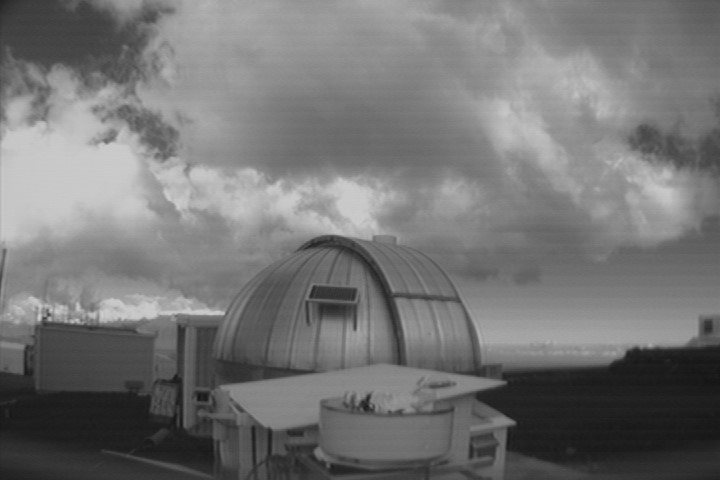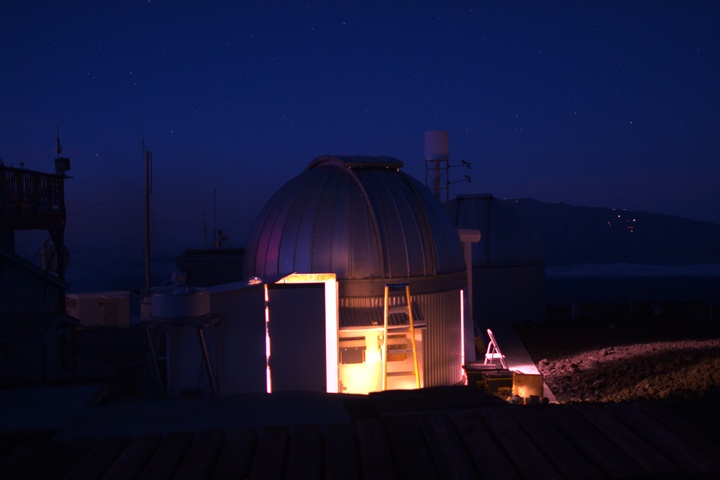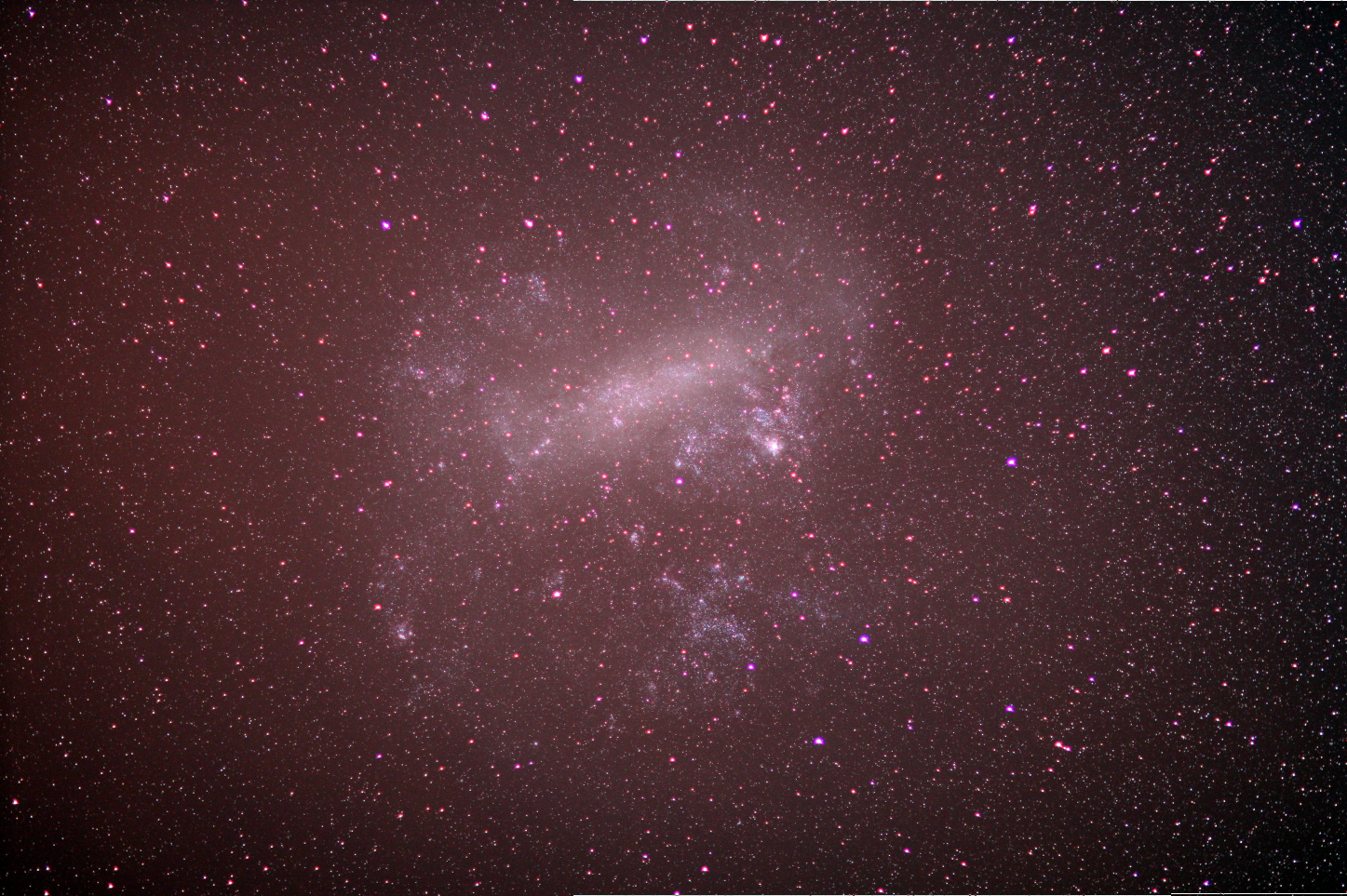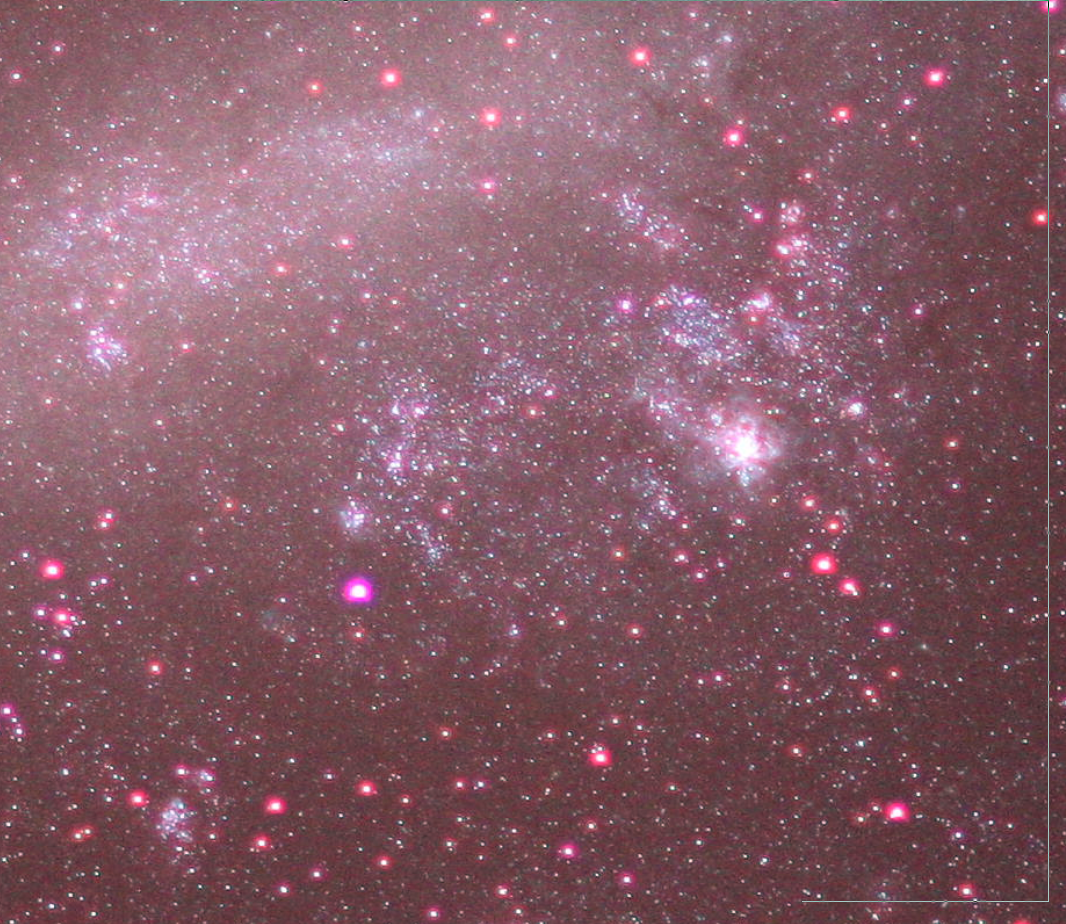|
Show content only (no menu, header)
Prototype 1 (Jan 2011 - July 2011)
A first prototype was installed in late 2010 on Mauna Loa observatory. The differences between this first prototype and the current system (installed in Aug 2011) are listed below. This page describes the characteristics of the first prototype.
MAIN DIFFERENCES BETWEEN PROTOTYPES 1 AND 2
| Prototype 1 | Prototype 2 |
| ROBOTIC OPERATION | March 2011 - July 2011 | Sept 2011 - current |
|---|
| LOCATION | Side of VYSOS computer building | Dedicated Metal frame |
|---|
| IMAGING SYSTEM | Single 150sq deg camera | Two 150sq deg cameras |
|---|
| TRACKING ELECTRONICS | Native Atlas EQ-G | EZstepper circuits (1 per axis) |
|---|
| TRACKING MODE | Open loop | closed loop guiding |
|---|
| TRACKING STABILITY | ~2"/mn drift | <1" |
|---|
 |
Image of the robotic camera system, as seen by one of VYSOS's CCTV cameras.
The white cylinder in the bottom of the image is the robotic camera. The large dome behind hosts the VYSOS 0.5m robotic telescope.
|
 |
Video of the installation at Mauna Loa Observatory (Dec 30, 2010).
|
Technical Overview
The system consists of a commercial digital camera (model Canon 500D, modified as described in http://www.naoj.org/staff/guyon/08astrophoto.web/03canon500dmod.web/content.html ) with a 85mm focal length lens at F1.2 (Canon EF 85mm f/1.2L II USM). The camera is mounted on a 2-axis equatorial mount (Orion Atlas EQ-G). The system (camera + mount) is computer controlled with a laptop. The data is stored on the laptop hard drive, and copied to an external hard drive.
The main system characteristics are:
- 150 square degree per frame (10 x 15 deg)
- 10 arcsec square pixels
- Able to reach mV ~ 15.5 point source sensitivity over full visible sky each night (no Moon)
- 70 mm aperture
- Simultaneous 3 color imaging (RGB Bayer pixel array)
- 4 mn individual exposures (no moon illumination), photon-noise limited on sky background
- 120 exposures per night, > 40% of full sky can be imaged each night
- 2 GB raw data per night
The data volume is approximately 2 GB per night, stored locally. The data is physically retrieved every ~2 month by copying it to an external drive (2 month of data = 120 GB). The average total power consumption is about 20W (including approximately 10W for laptop) at night, and 10W during the day.
Hardware Description
The total volume of the system is a 67 cm diameter, 35 cm tall cylinder. The bottom part of the volume consists of the electronics plate, the top part is a platform which holds the mount & camera. The laptop computer is located in a separate weather-proof enclosure.
See the hardware section for a more detailed description.
Durability, reliability, exposure to weather
The durability of the system is a big concern. To keep the system simple and low cost, it does not have a dome: the camera points down when it rains/snows or when there are clouds. The large cylinder around the camera keeps wind down to ensure stable pointing during windy conditions, but also keeps wind from blowing rain particles upward to the camera lens during rainy weather. As the rain falls down into the cylinder, it can drip down the side of the large aluminum plate: there is a gap between the bottom of the cylinder and the top of the aluminum plate, so that the cylinder does not fill up with water. Electronics and power supplies are mounted directly below the aluminum plate so that they are protected from rain/snow. The gentle heat generated by the electronics also hels melt ice/snow on the aluminum plate.
The system includes several sensors to determine if the weather is suitable for observing:
- Three webcams acquire images every minute, and are used to automatically confirm nighttime (which is primarly derived from the Sun altitude below the horizon, according to the computer clock). Visual inspection of the webcam images can also identify snow/ice on the mount or camera.
- Temperature probes facing the sky and the ground are used to detect clear sky at night: if the sky is clear, the upward looking temperature probe is colder than the downward looking probe (thermal radiation to the sky). If this temperature difference is larger than a preset limit, then the sky is deemed clear and observing can start.
- A humidity sensor is used
In addition to these sensors, the weather information provided by the VYSOS observatory and the the Mauna Loa observatory are downloaded evry minute from the network. Decision to observe is made from all sensor values.
The system is designed to minimize the long-term impact of weather :
- no exposed plastic (to avoid UV degradation of plastics)
- mount has been sealed against water with silicone
- camera is sealed (cover) except at the front (lens) which points down when weather is bad
- use of weather-resistant materials when possible: Aluminum instead of steel when possible, Stainless instead of standard steel for bolts/nuts, use of Kapton tape when tape must be exposed.
First light in Australia with early alt-az mount [June 2010]
In June 2010, I took the small mount and camera to Australia, where the first on-sky imaging was done. A sample image is shown below for the LMC. The image was acquired with 2mn exposure time, and is shown here with no processing (no flat fielding or dark subtraction).
 |
2mn exposure on the LMC using the camera + mount
This image is not processed (no flat field, no dark subtraction).
|
 |
2mn exposure on the LMC using the camera + mount (detail)
Part of the full image shown in the previous figure.
|
Page content last updated:
27/06/2023 06:35:52 HST
html file generated 27/06/2023 06:34:44 HST
|

